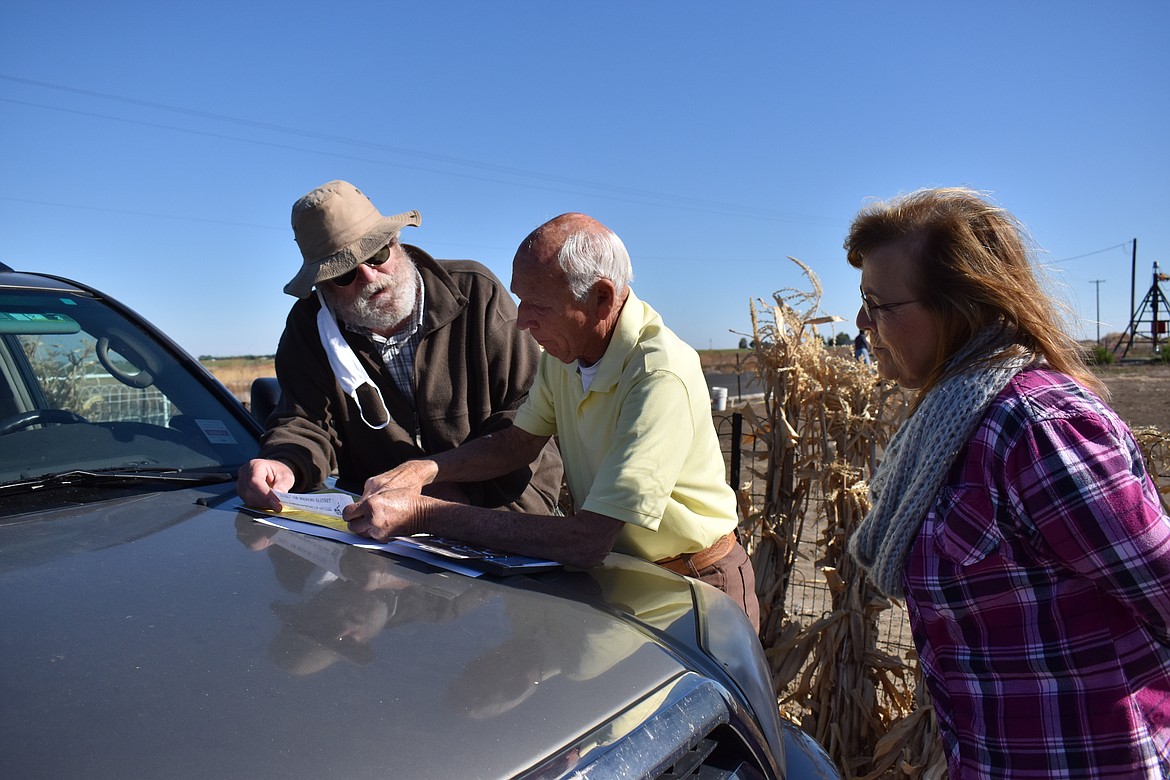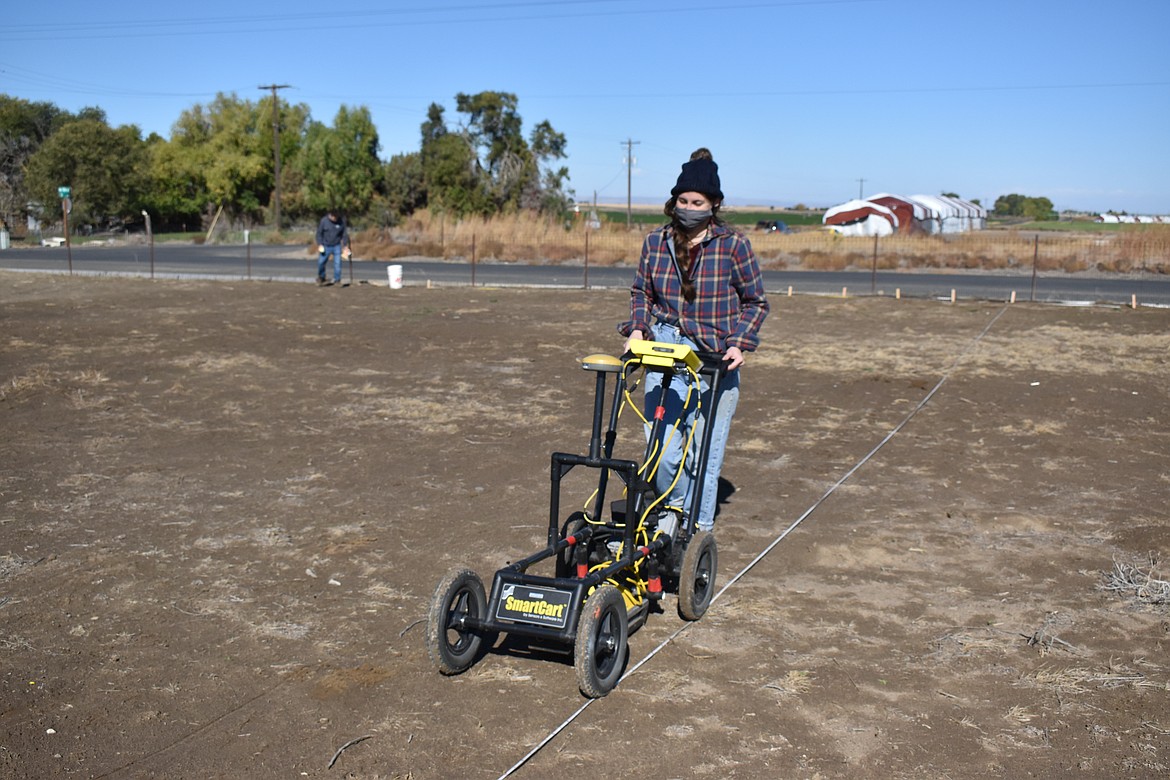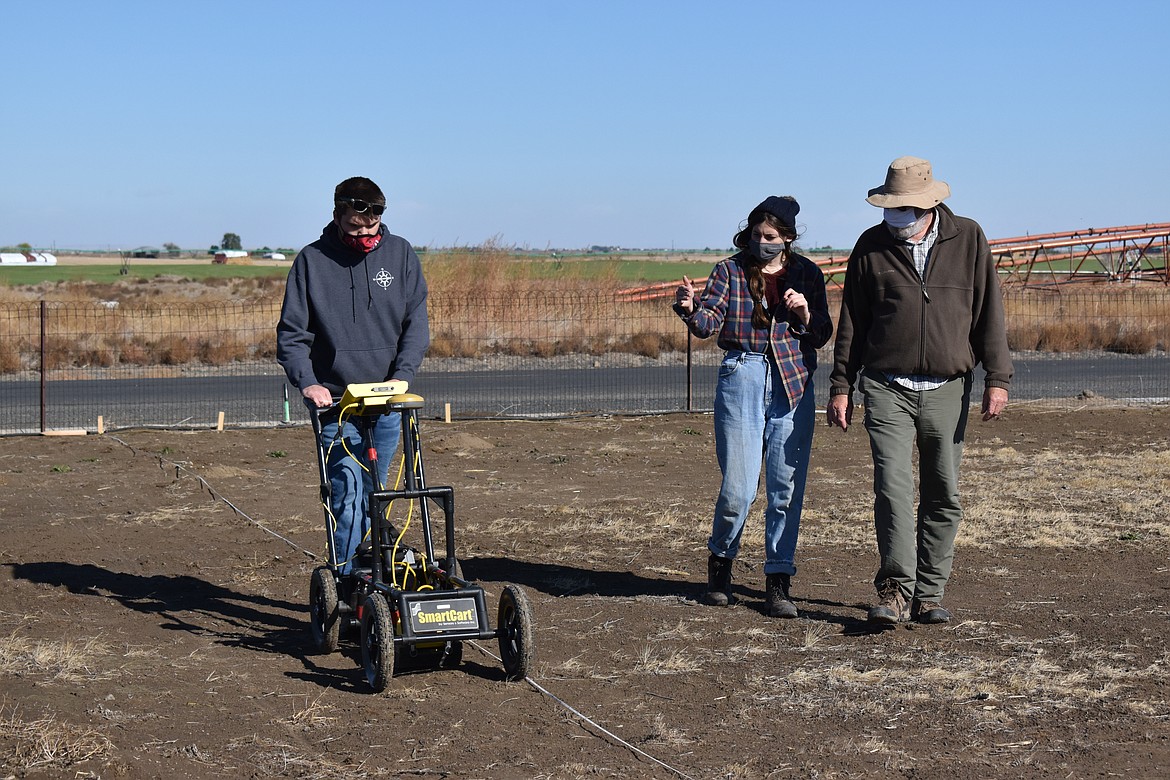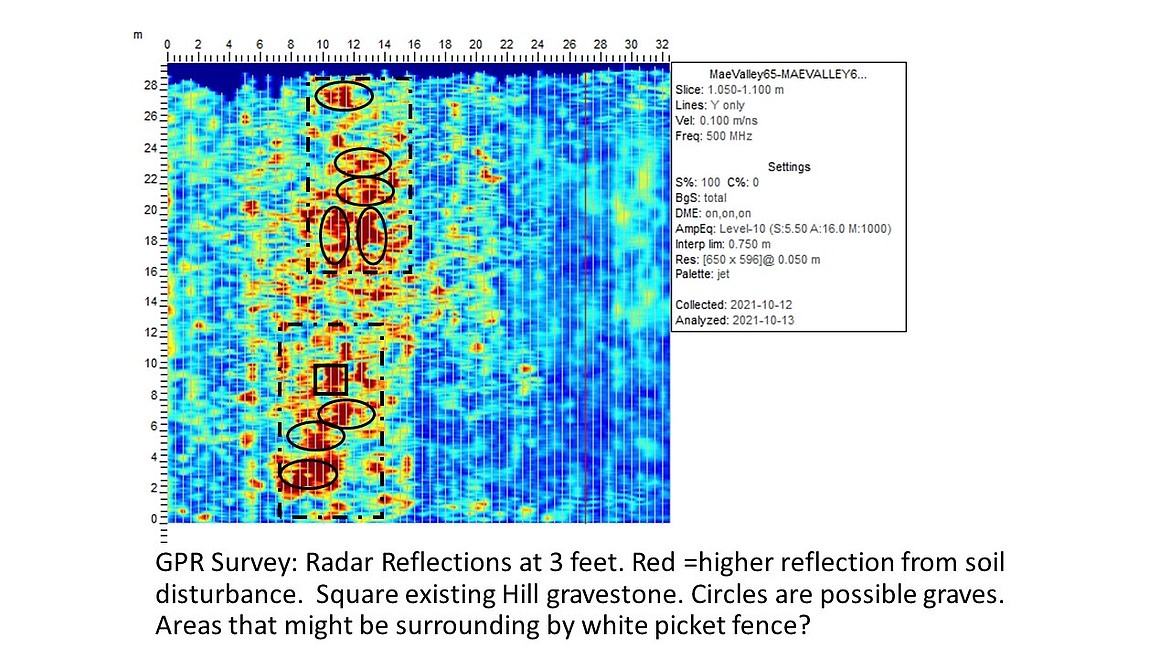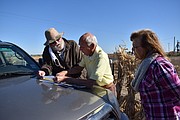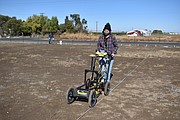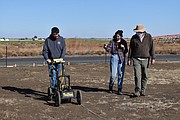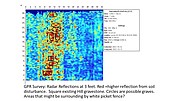Gone but not forgotten: Local woman works to improve little-known cemetery in Mae Valley
Ruth Hinen Latham, of Moses Lake, has taken it upon herself to restore a small cemetery along Mae Valley Road.
The cemetery is called the Hill Family Cemetery, but according to Maggie Rail, a woman who has chronicled cemeteries from all over the western United States and Canada, it is also known as the Mae Valley Cemetery and Bell Cemetery.
Research by Rail says “the cemetery is all but forgotten. It does get mowed once in a while, but most markers are gone, with the exception of one lone stone for Ella and George Hill. It shows evidence of other burials.”
While there is only one headstone, there are supposed to be around a dozen people buried in the cemetery. From what Latham could learn, there is no record of them being moved. This leaves the possibility all the graves are still in the almost-forgotten cemetery with no way to show it.
About four years ago, Latham came across the cemetery surrounding her and her husband’s property on three sides.
“God just gave me a project,” said Latham.
The cemetery is private property and it was set to go up for auction, but Latham paid the back taxes owed on the three-fourths acre parcel. Latham said the property is owned by Claire and Janet Hansen, who are dead, but their estate hasn’t been settled yet between their children. One of the Hansens’ sons, Dick, tried to quitclaim deed the cemetery property to Latham, but Latham said Grant County Treasurer Darryl Pheasant turned it down.
Latham hasn’t let it deter her, though, and is applying for a grant that awards up to $50,000 for cemetery improvements.
“Out of respect for the dead, I have to do something,” Latham said.
Latham also reached out to professor Steven Hackenberger who teaches anthropology at Central Washington University (CWU). This was no strange request for Hackenberger, who has done similar work at cemeteries.
His work is to run a ground penetrating radar across areas suspected to be unmarked graves and compile the data from the machine to determine if there is cause for the conclusion of any graves located in that area.
Hackenberger brought seven students over Oct. 9 and 10 to the cemetery to log the layout, run the ground penetrating radar and learn the history of the cemetery. The CWU students were Madeline Murphine, Harley Biggs, Natasha Lipsky, Raelynne Crow, Maria Kovach, Merritt Deshon and Anthony Joreski.
George F. Hill and his wife Ella M. are named on the only standing headstone in the cemetery. George and Ella were among the first to settle in the Mae Valley area in 1905, before Grant County itself was incorporated, according to information from George and Ella’s obituaries.
Ella and George had eight children and built a life for themselves on what is now Mae Valley Road. Where their homestead once stood is part of the property owned by the Hansens.
In his obituary in November 1922, George F. Hill was called “one of Grant County’s finest old time pioneer farmers.” The obituary also spoke highly of his farming skills and said “he was a successful farmer, making his land a bountiful field of diversified products, demonstrating what the soil of this county could do under proper care and tillage.”
The end of the obituary said he was buried “near the homestead where he has accomplished such splendid results.” This cemetery, the Hill Family Cemetery, was only up the hill from the home.
According to the information from Rail, the following people were buried at the cemetery:
• Clarence Hill
• Ella M. Hill
• Ella Hill
• George F. Hill
• George Hill
• George Hill
• Kenneth Hill
• Eli Stanley
• Emma Hill Stenger
• Infant Stenger
• Washenbach girl
With any genealogical research, it is common for errors or unclear facts to arise. In this case, it is unclear if any of the names may be duplicates of the same person.
The scans Hackenberger and his students took show what appears to be eight unmarked graves.
“There are areas of deeply disturbed soil that probably correspond with graves. Short of stripping the 2 or 3 feet to look for outlines of the graves, the red reflections are the best definition we will get,” Hackenberger wrote in an email.
Latham said regardless of the outcome of the grant, she is going to do something to mark the graves and spruce up the cemetery. She is not going to have the graves dug up or exhumed to verify if the graves are still there; she is going forward with the evidence they are most likely there.
“It will be a work in progress,” Latham said.
Anyone with information related to the cemetery can contact Latham at hinen1953@yahoo.com.




